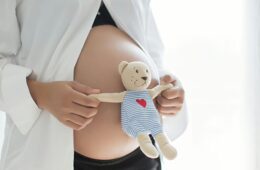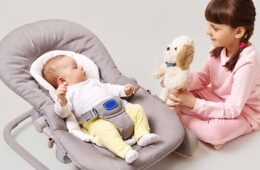Common Nursery Hazards
When it comes to common crib hazards, there are the obvious things to avoid, such as putting blankets, pillows, and stuffed animals in the crib with a very young infant. However there are also other factors to consider that many parents can sometimes overlook when planning out their nursery.
The American Academy of Pediatrics recommends that babies be placed on their backs to sleep. Once your baby can roll around, they will probably flop to their stomach as it is a far more comfortable position for baby to sleep in and that’s fine. Swaddles may help newborns to doze off, but once baby shows signs of trying to roll, you need to get rid of the swaddle.
Make sure the crib is not next to any windows, under any pieces of art or light fixtures, and there is nothing that a little one could reach out and pull into the crib.
Crib bumpers are usually frowned upon as they pose a suffocation hazard. There are so-called breathable bumpers but these can act as a makeshift step stool for babies that are crawling and climbing, so it’s best to avoid these as well. A stuck foot is a much easier thing to deal with than a baby that has fallen from his crib.
Temperature is one of the most commonly ignored factors when considering infant safety. A cool room, about 68 degrees, is ideal. Make sure the room is also well ventilated; if you don’t have AC, use a fan a safe distance from baby’s crib.
Make sure that the crib you buy is made after 2012 as the safety guidelines changed then. Avoid antiques, no matter how charming.
Don’t buy a used mattress as they are softer due to being broken in and it’s pretty unhygienic as well.
By Hannah Mira, Founder of Bonsoir Bebe Sleep Consulting
Let’s Glow
Glow is here for you on your path to pregnancy
Glow helps you navigate your fertility journey with smart tools, personalized insights, and guidance from medical experts who understand what matters most.
25+ million
Users
4.8 stars
200k+ app ratings
20+
Medical advisors



